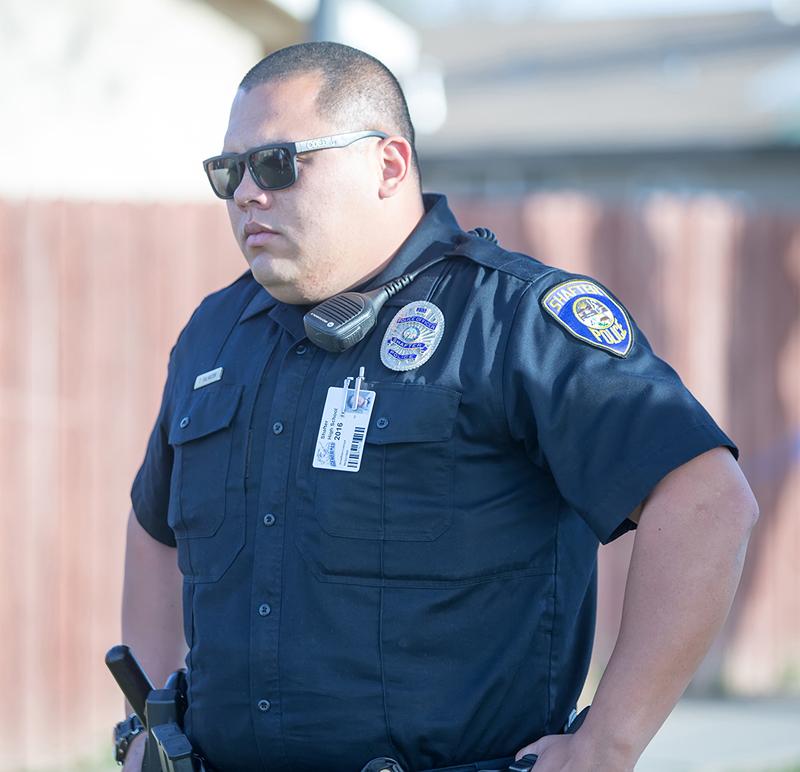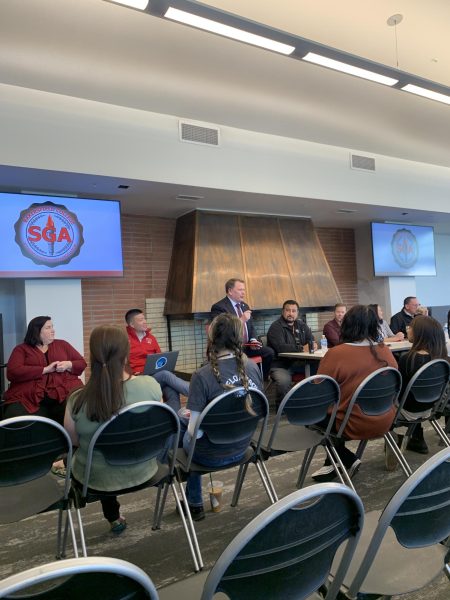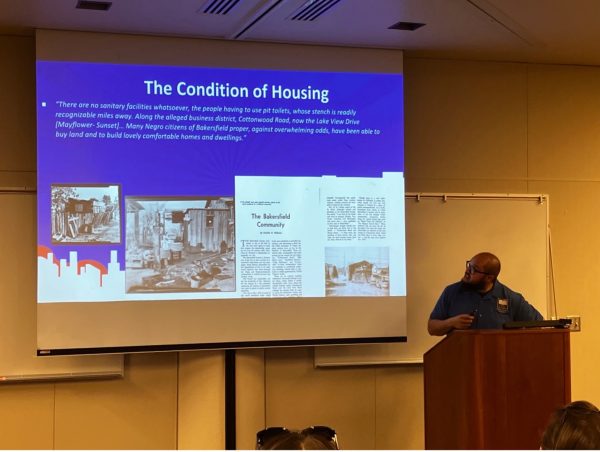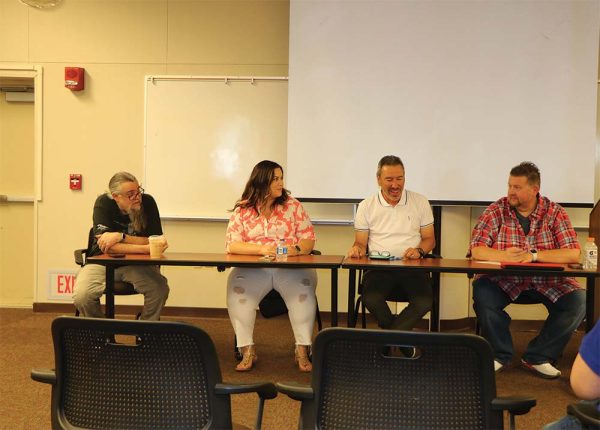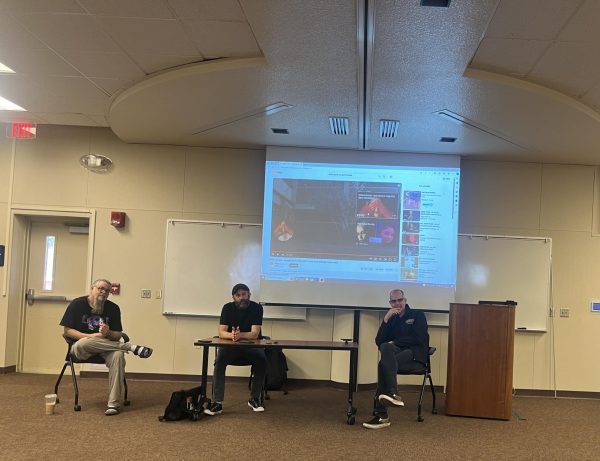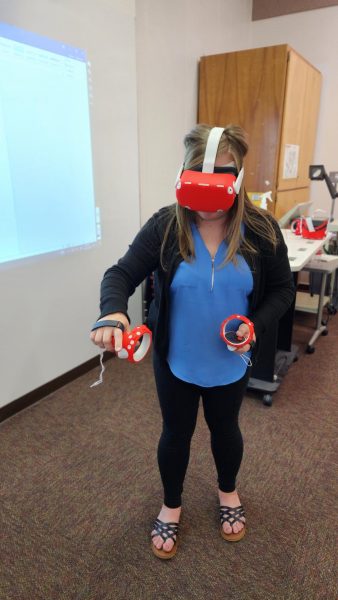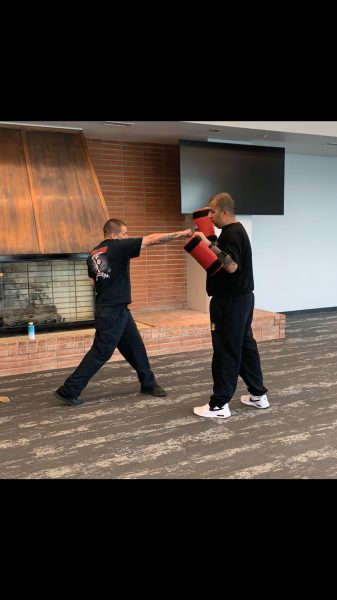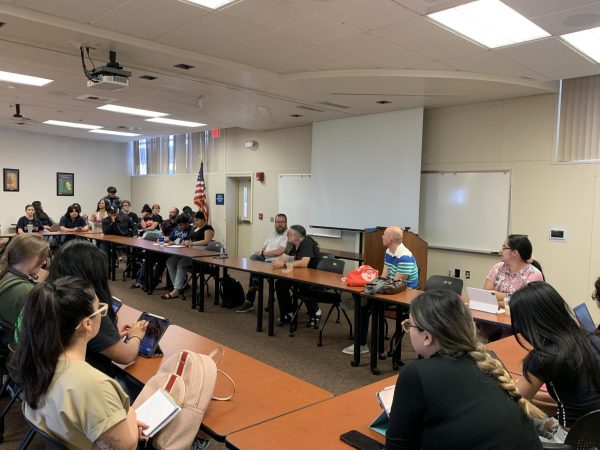Shafter PD shares tips on career path
March 15, 2016
Line Level officer Tim Salvador, who has been a police officer for five and a half years working for the Shafter Police Department, admitted to not wanting to be a police officer.
“I never wanted to be a cop. I never planned on being a cop when I was a kid. I mean, I thought police officers were cool, but that was never something that I aspired to be. I was in the military as a medic. I was going to go to the medical field route.”
While working as an Emergency Medical Technician, also known as an EMT, Salvador took online classes for fire fighters at Bakersfield College while volunteering at the Sheriff’s Activity League at Lake Isabella. Their main goal is to help the youth. A deputy in charge approached Salvador and told him, “You could have your own activity league program” and that they were hiring.
For Salvador, this was a great opportunity because he was still in school and had yet to decide on a career path. The thought of being paid while running his own activity program was more fulfilling than the medical field.
Salvador had some recommendations for BC students who wanted to work in law enforcement.
“I would highly recommend them putting themselves through a post academy, the police academy standards, and training academy. There a lot of courses that give you experience, show you arrest techniques, but you don’t obtain your post training certificate.”
Salvador said once the academy is completed and you obtain the certificate, you can apply to any department. He said it makes your resume look good and it also tells people, “Hey, I want to be a police officer. I haven’t been made an officer yet, but I put myself through the academy.”
BC is associated with the Kern Regional Police Academy, which a majority of officers attend. Some are sponsored while other pay their own way.
Salvador has had friends who went through the academy and took out personal loans of $7,000.
He also explained how the hiring process of getting into the academy is similar to the hiring process for a department.
“Right off the bat, when you apply for the training academy as a student, a self-paid student, they’re going through all the jumps and hoops, so they are already going to start them off on giving them that experience,” Salvador said. He also had to go through an oral board interview and then they did a background check. He did all that just to get through the threshold.
Salvador also recommends the National Registry of EMT course which is approximately six months long, but he would not recommend doing this alongside the academy or even after working full time. Since it’s not required now, this would allow them to stand out from other applicants, because having the NREMT certificate would benefit the department since they are first responders to medical calls.
Salvador also feels that technology doesn’t hinder the department.
“There are a lot of departments out there who do the best they can with the equipment they have,” he said. “It’s always nice to have the newest high-tech equipment, but in terms of doing our job effectively, I think that equipment is more about efficiency than it is about quality.”
Salvador also mentioned that there is not an ordinary day in law enforcement.
“A lot of people will enjoy this occupation because you never see anything the same. You’ll never have the exact same day when you come to work,” he said.
Days may be slower for no reason or the number of calls they received could affect it.
Usually they’ll walk into the office where the last shift will tell the new shift all the events that may carry over to the new shift.
They will also be updated on any calls of service or if someone is in the holding jail.
If they arrested someone now it wouldn’t make any sense to transport them for booking.


